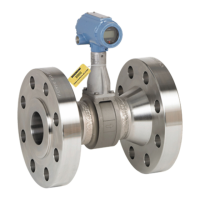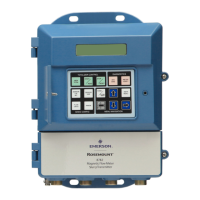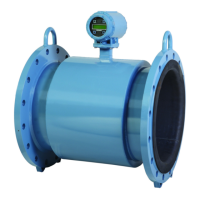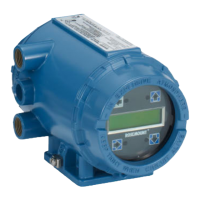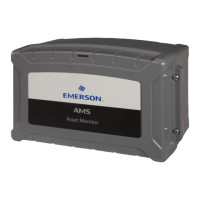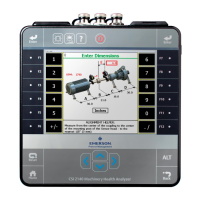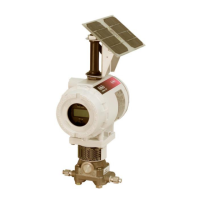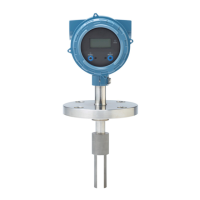2-7
Installation
Alarm
As part of normal operations, the Model 8800C continuously runs a
self-diagnostic routine. If the routine detects an internal failure in the
electronics, flowmeter output is driven to a low or high alarm level,
depending on the position of the failure mode jumper. The jumper is set
per the CDS; the default setting is HIGH.
The failure mode jumper is labeled ALARM and is set to the high
position at the factory.
Security
You can protect the configuration data with the security lockout jumper.
With the security lockout jumper on, any configuration changes
attempted on the electronics are disallowed. You can still access and
review any of the operating parameters and scroll through the
available changes, but no actual changes will be permitted. The jumper
is set per CDS; the default setting is OFF.
Failure Mode vs.
Saturation Output Values
The failure mode alarm output levels differ from the output values that
occur when the operating flow is outside the range points. When the
operating flow is outside the range points, the analog output continues
to track the operating flow until reaching the saturation value listed
below; the output does not exceed the listed saturation value regardless
of the operating flow. For example, with standard alarm and saturation
levels and flows outside the 4—20 mA range points, the output
saturates at 3.9 mA or 20.8 mA. When the transmitter diagnostics
detect a failure, the analog output is set to a specific alarm value that
differs from the saturation value to allow for proper troubleshooting.
.
.
Table 2-1. Analog Output: Standard Alarm Values vs. Saturation Values
Level 4—20 mA Saturation Value 4—20 mA Alarm Value
Low 3.9 mA <
3.75 mA
High 20.8 mA >21.75 mA
Table 2-2. Analog Output: NAMUR-Compliant Alarm Values vs. Saturation Values
Level 4—20 mA Saturation Value 4—20 mA Alarm Value
Low 3.8 mA <
3.6 mA
High 20.5 mA >22.5 mA
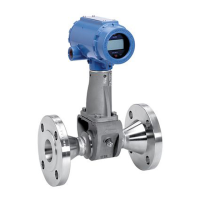
